Clouded Judgement 12.31.21
Every week I’ll provide updates on the latest trends in cloud software companies. Follow along to stay up to date!
Q3 Earnings Recap
This week I published my quarterly earnings recap. In this post you can see how cloud companies performed relative to consensus estimates, how they guided for next quarter, and how their key metrics stack up. A summary:
BONUS - Top 10 Share Price Returns of 2021
This year was volatile for cloud software companies. The below list shows which stocks rose the most in 2021 (as of Thursday):
Top 10 EV / NTM Revenue Multiples
When looking back at my final post from 2020 (one year ago), there were 5 companies that were in the top 10 at year end last year, who are also in the top 10 to end this year. Those are: Snowflake, Bill.com, Cloudflare, Datadog, and Zscaler. Interestingly, these are the top 5 highest multiples today (excluding Hashicorp who went public this year and wasn’t public at the end of 2020). The other 5 companies that were in the top 10 at year end last year (but not today) were Unity, Coupa, Palantir, nCino and Shopify. Below is a snapshot of the 2020 year end data so you can compare. Interestingly Snowflake (the top multiple to end last year and this year) has seen its multiple compress ~35% yet its stock is up ~20% this year
Top 10 Weekly Share Price Movement
Update on Multiples
SaaS businesses are valued on a multiple of their revenue - in most cases the projected revenue for the next 12 months. Multiples shown below are calculated by taking the Enterprise Value (market cap + debt - cash) / NTM revenue.
Overall Stats:
Overall Median: 12.4x
Top 5 Median: 42.4x
3 Month Trailing Average: 14.4x
1 Year Trailing Average: 15.7x
Bucketed by Growth. In the buckets below I consider high growth >30% projected NTM growth, mid growth 15%-30% and low growth <15%
High Growth Median: 27.2x
Mid Growth Median: 11.6x
Low Growth Median: 5.5x
Scatter Plot of EV / NTM Rev Multiple vs NTM Rev Growth
How correlated is growth to valuation multiple?
Growth Adjusted EV / NTM Rev
The below chart shows the EV / NTM revenue multiple divided by NTM consensus growth expectations. The goal of this graph is to show how relatively cheap / expensive each stock is relative to their growth expectations
Operating Metrics
Median NTM growth rate: 24%
Median LTM growth rate: 34%
Median Gross Margin: 74%
Median Operating Margin (19%)
Median FCF Margin: 4%
Median Net Retention: 119%
Median CAC Payback: 25 months
Median S&M % Revenue: 44%
Median R&D % Revenue: 26%
Median G&A % Revenue: 19%
Comps Output
Rule of 40 shows LTM growth rate + LTM FCF Margin. FCF calculated as Cash Flow from Operations - Capital Expenditures
GM Adjusted Payback is calculated as: (Previous Q S&M) / (Net New ARR in Q x Gross Margin) x 12 . It shows the number of months it takes for a SaaS business to payback their fully burdened CAC on a gross profit basis. Most public companies don’t report net new ARR, so I’m taking an implied ARR metric (quarterly subscription revenue x 4). Net new ARR is simply the ARR of the current quarter, minus the ARR of the previous quarter. Companies that do not disclose subscription rev have been left out of the analysis and are listed as NA.
This post and the information presented are intended for informational purposes only. The views expressed herein are the author’s alone and do not constitute an offer to sell, or a recommendation to purchase, or a solicitation of an offer to buy, any security, nor a recommendation for any investment product or service. While certain information contained herein has been obtained from sources believed to be reliable, neither the author nor any of his employers or their affiliates have independently verified this information, and its accuracy and completeness cannot be guaranteed. Accordingly, no representation or warranty, express or implied, is made as to, and no reliance should be placed on, the fairness, accuracy, timeliness or completeness of this information. The author and all employers and their affiliated persons assume no liability for this information and no obligation to update the information or analysis contained herein in the future.




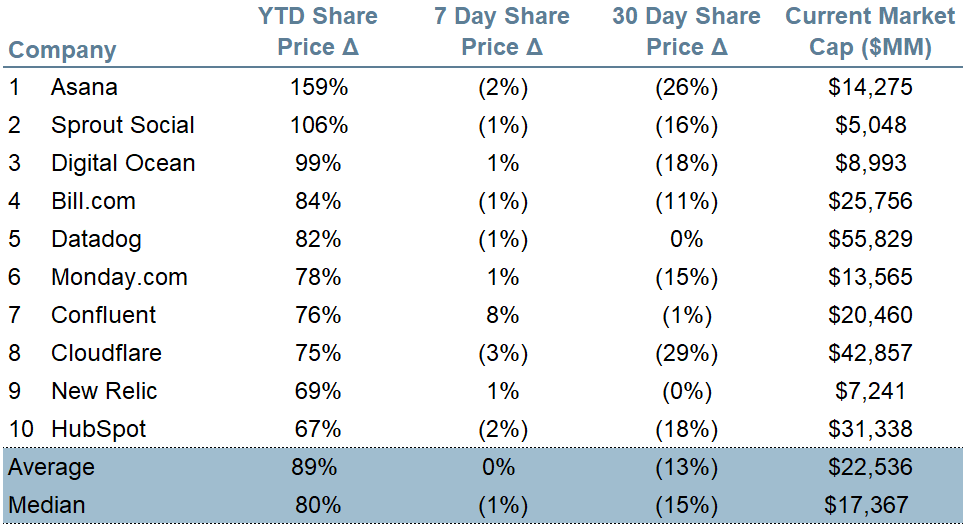
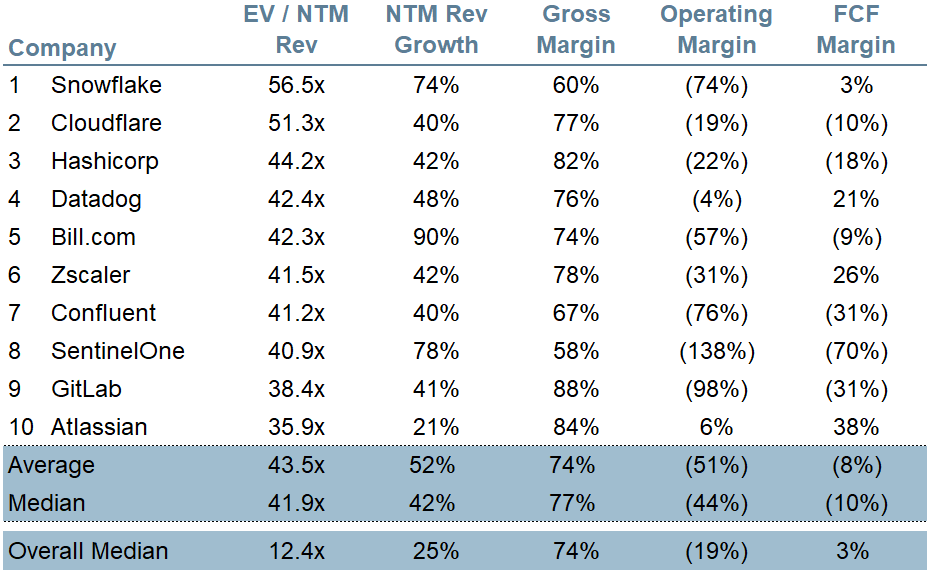
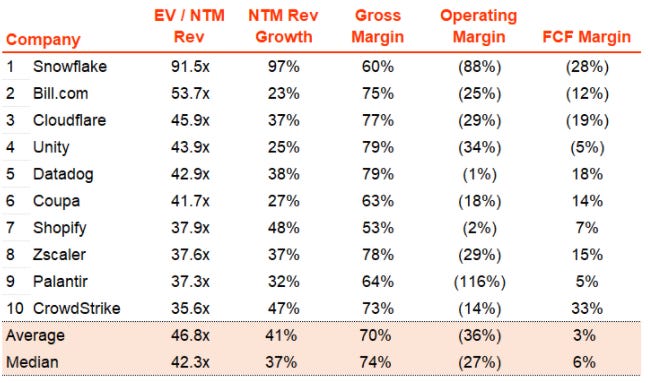

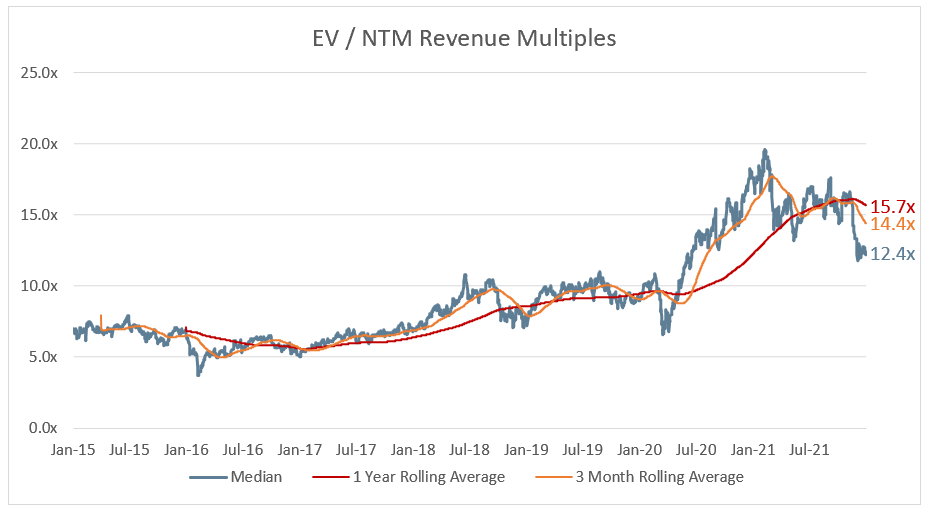
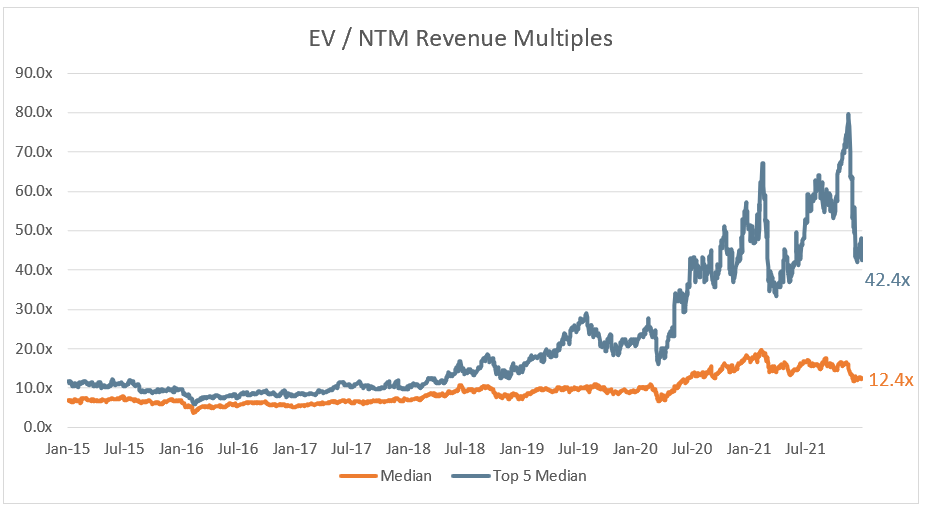







Jamin, love you data -thank you! At the end of the day, the bucket of high growth stocks have seen their valuation extend and have been the big winners. But I've seen you mention that if you take out those companies that IPO'd in the last year (I believe it was), the numbers change meaningfully. Are we seeing similar disparities by the fact that the top decile companies Growth Rates are perhaps unprecedented? How do valuations compare for specific growth cohorts such as 40% or 50% I wonder?